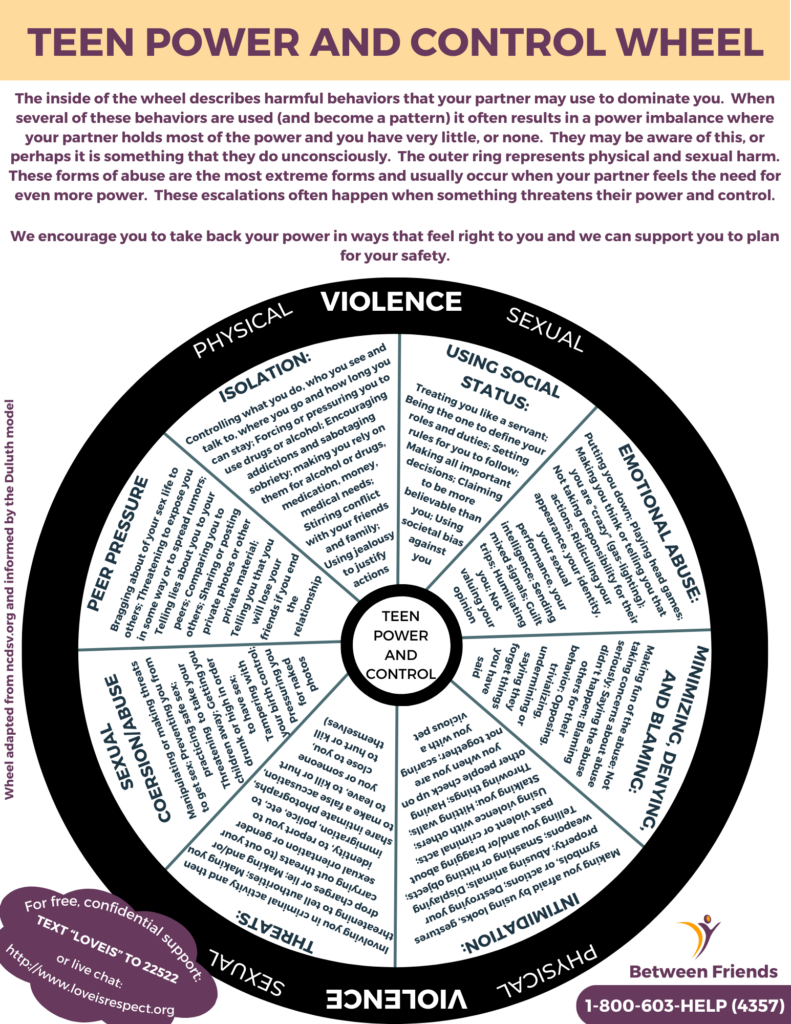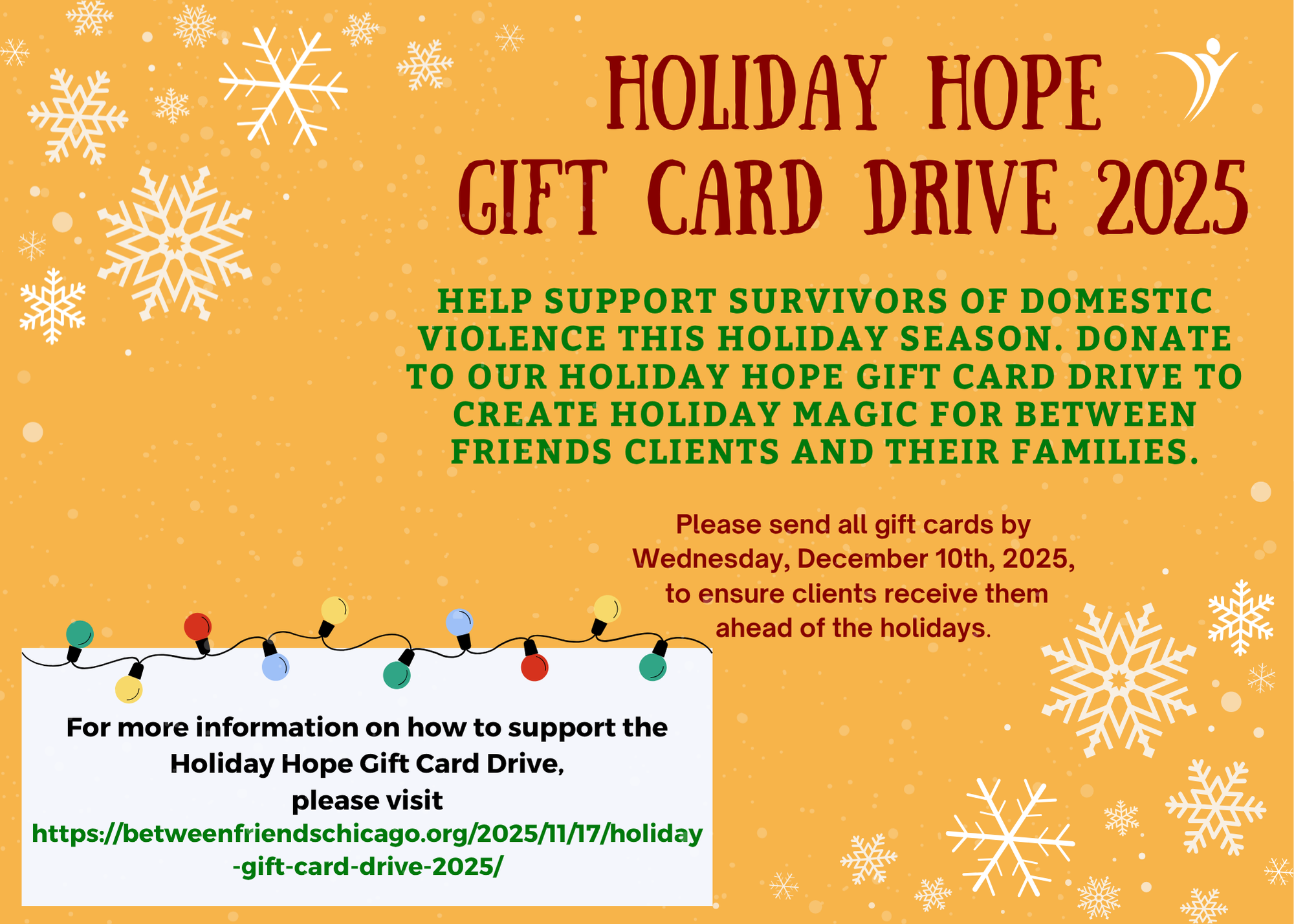Written by Between Friends’ Community and Professional Training Manager
February is Teen Dating Violence Awareness Month, a time to reflect on the prevalence of dating violence among adolescents and look at some of the ways we can support them!
One in three adolescents experience dating violence, and the abuse they experience follows very similar patterns to what we see among adults. For example, adolescent relationship abuse is cyclical, just like the Cycle of Harm we identify in adult domestic violence. We know that the same power and control dynamic is present in adolescent relationships as well. The Power and Control Wheel for Teenagers highlights some different tactics that may be more common in adolescent relationships, but the dynamics remain the same.
One key difference between adolescent and adult relationship abuse is that younger people, having fewer experiences with relationships and more exposure to popular culture, may be more influenced by the mixed messages they receive from society. One such mixed message that has been on the minds of the young people we see in the classroom, is the conflict between celebrities Blake Lively and Justin Baldoni.
The media coverage of the conflict between Blake and Justin, and the social media barrage of supporters and critics, shines light on one of the damaging messages that many adolescents receive about dating violence: the myth that survivors should be scrutinized because they are often lying. Data from the criminal legal system reveals that false police reports of domestic violence are actually very uncommon. We find that someone who has actually experienced this harm is not likely to lie about it.
However, the truth is that the public will never know all the details and facts of what happened between Blake and Justin, and we are not interested in adding our voices to the cacophony of speculators, but we are interested in having a conversation about the ways that this speculation can be so deeply harmful to survivors.
The most obvious harm caused by the speculation is that it has a chilling effect on survivors who really need support. We know first-hand that people who cause harm are often very believable and compelling people. Part of how they maintain the power they have over their partner is by creating a world around them where no one would ever suspect their abusive behavior. Many times, they even take the additional step of claiming that they are actually the one being harmed and they may be manipulative enough to create a very compelling false narrative, along with evidence taken out of context, to prove their victimhood. We see this kind of manipulation being used against survivors routinely, and we know that it is a powerful way to undercut a survivor’s credibility and ultimately silence them.
In the case of Blake and Justin, who are both claiming to have been the victim of the other, we need to recognize that the speculation is harmful. It perpetuates fear that when survivors come forward people will jump to conclusions, will doubt them, will blame them, maybe even attack them on social media. Let’s let this case play out in a courtroom instead of online, where other survivors are listening and perhaps deciding it is too risky to ask for help.


